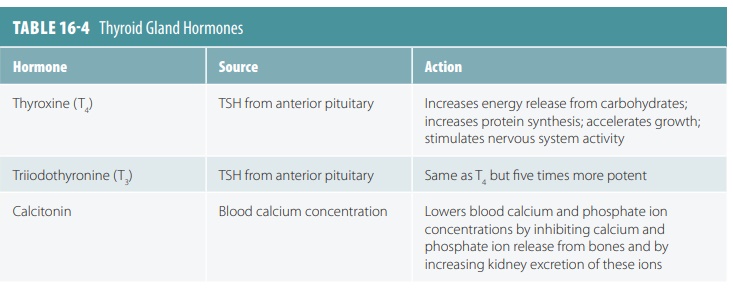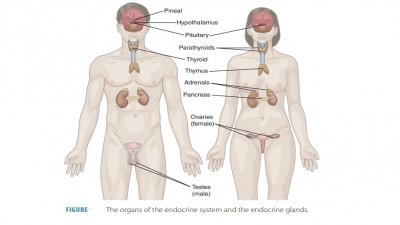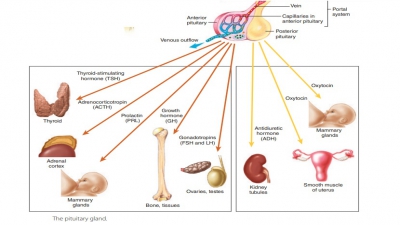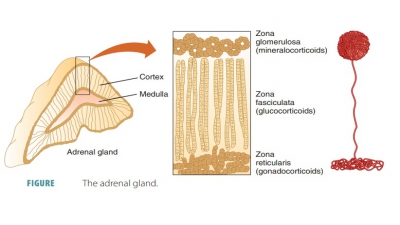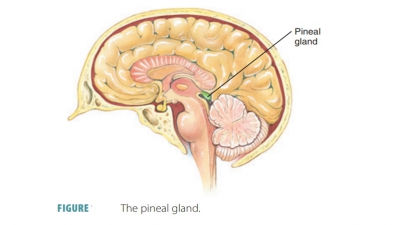Thyroid Gland
| Home | | Anatomy and Physiology | | Anatomy and Physiology Health Education (APHE) |Chapter: Anatomy and Physiology for Health Professionals: Endocrine System
The thyroid gland is located just below the larynx on either side and in front of the trachea .
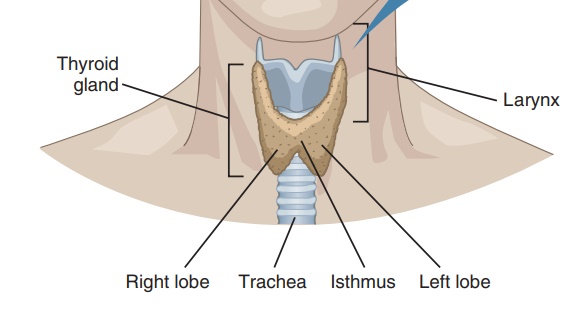
Thyroid
Gland
The thyroid
gland is located just below the larynx on either side and in
front of the trachea ( FIGURE
16-14). It consists of two large lobes that are connected by a broad isthmus, forming a “butterfly” shape and is covered by a capsule of
connective tissue with secre-tory parts called follicles. The thyroid’s lumen
or central cavity is filled with a clear, amber-colored substance called colloid, which stores hormones the glycoprotein
called thyroglobulin. From
this substance, thyroid
hormone is synthesized, which affects nearly every cell in the
body. Thyroid hor-mone production requires the presence of iodine and calcium.
This hormone is the body’s primary metabolic hormone containing thyroxine, which is also known as tetraiodothyronine or T4 and triiodothyronine or T3. The number of each of these iodine -containing amine
hormones indicates the number of atoms of iodine. T3 is five times
as potent as T4. Thyroxine regulates metabolism of carbohydrates, lipids,
and proteins, determining the body’s basal metabolic rate. Thyroid hormones are
required for growth, development, and matura-tion of the nervous system.
Thyroxine is the major hormone of the thyroid follicles. Most triiodothy-ronine
forms at target tissues because of thyroxine. Most molecules of the thyroid
hormones attach to thyroid- binding
globulins upon entering the blood-stream. In the circulation, most
remaining mole-cules attach to transthyretin,
which is also called thyroid-binding
prealbumin or to albumin itself.
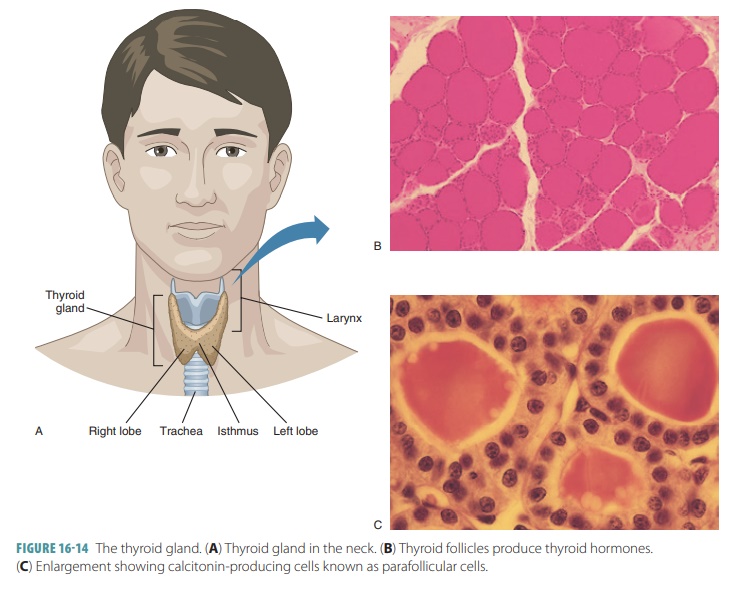
Thyroid hormones enter target cells binding to intracellular
receptors in the cell’s nucleus. They con-trol transcription of mRNA needed for
protein syn-thesis. The many effects of thyroid hormones include increase of
basal metabolic rate, increase of body heat production or the calorigenic effect, regulation of tissue growth and
development, and maintenance of blood pressure.
Iodine salts or iodides
are needed by the follicular cells to secrete thyroid hormones. Thyroid hormone
secretion is controlled by the hypothalamus and pitu-itary gland. Calcitonin is another hormone secreted by the
thyroid, although it is produced by its parafol-licular cells, also known as C cells, rather than the fol-licular
cells. These cells lie in the follicular epithelium, protruding into the
connective tissue surrounding the thyroid follicles. Calcitonin is a
polypeptide hormone that regulates concentrations of blood calcium and
phosphate ions and its release is controlled by blood concentration of calcium ions.
Calcitonin inhibits osteoclast activity, which inhibits bone resorption and
release of calcium from the bone matrix. It also stimulates calcium uptake and
incorporation into the bone matrix. TABLE
16-4 discusses the actions of thy-roid hormones.
